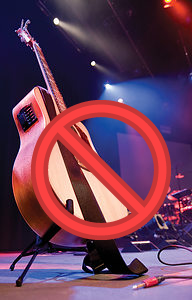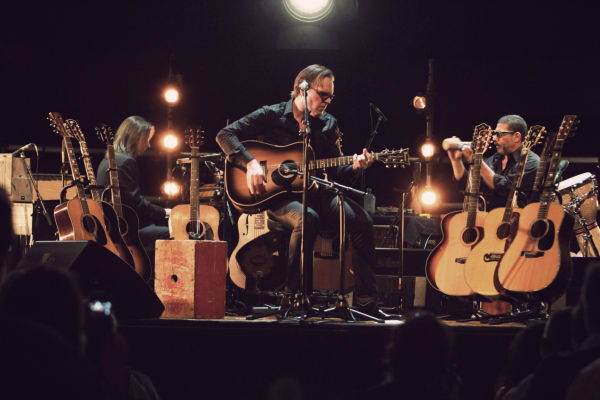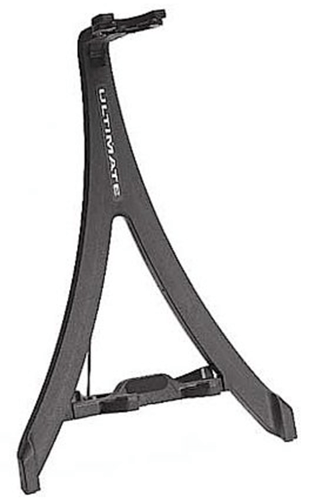We have lots of experience as performers.
Care to share an idea that can spare someone else the heartache of learning something first-hand?
What's the lesson here?
Always check your strap locks OR always have a backup guitar?
On a more serious note - and the thought that led to this post.
I have some of my guitars on an 8-guitar tree. One day, a friend picked up the Composite Acoustics Cargo by the guitar strap. The guitar was pointed up. She lifted the strap straight up. The strap came up off the strap button by the neck joint. When the weight shifted, the guitar flew up and flipped over and came down headstock first on the carpet.
Wham! Thud! Strings reverberating (you know the sound).
After reassuring my friend that the world had not come to an end, I picked up the guitar, strummed it, and it was still in tune. I can't imagine any of the other guitars around here coming through that experience unscathed.
It's funny the things you learn to (not) do. I never lift a guitar by the strap or let the strap to take the weight of the guitar unless the guitar is horizontal in playing position and I have one hand firmly on the guitar - even with strap locks. Of course, these things we take as innate knowledge/wisdom are not common sense. You learn them through sad and sorry experience or if you're lucky, a close-call/near-miss.
Please share a tip or lesson learned.
Thanks,
ST


